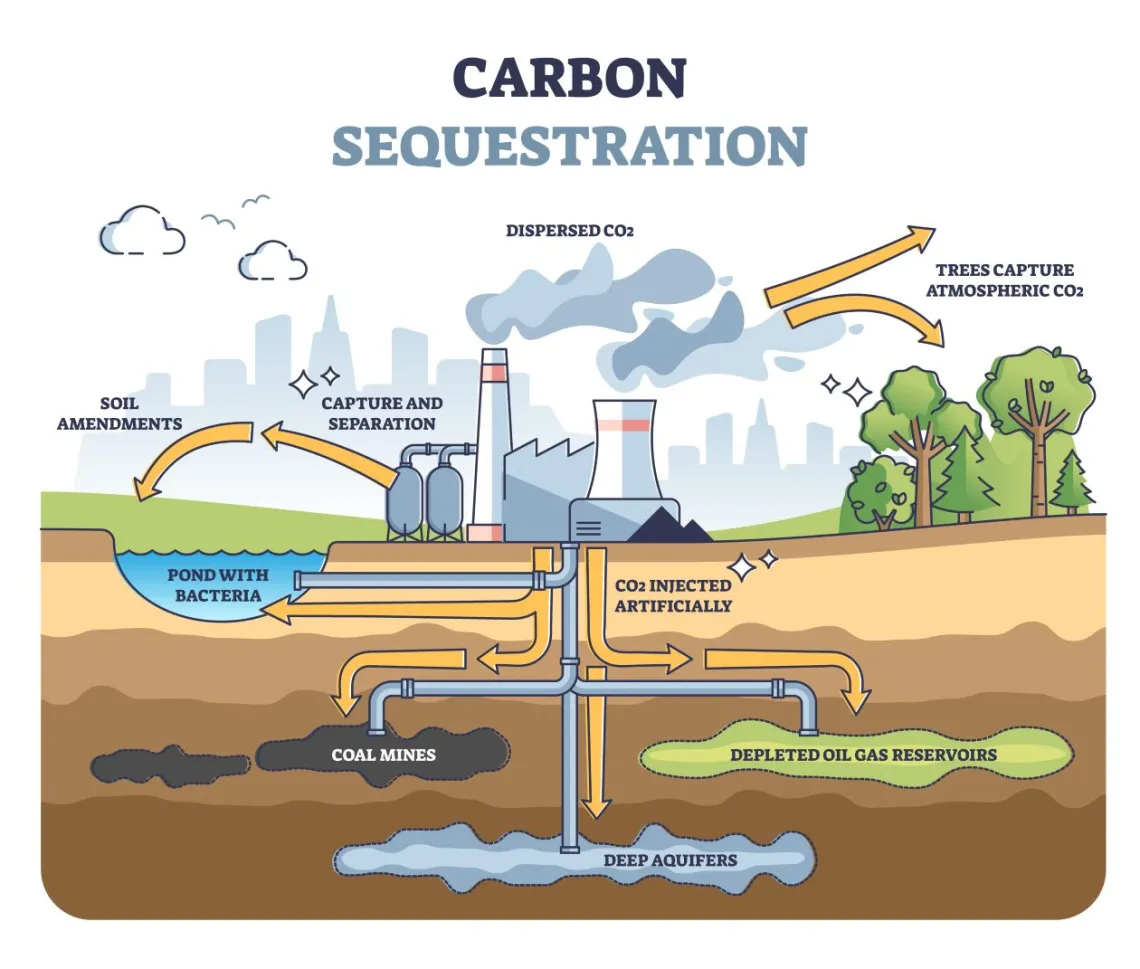
When
Where
SPECIAL DAY: Friday
CHANGE IN LOCATION: ENR2 Room S210
Seminar Format
Available in-person and via Zoom webinar. Contact the department to subscribe to the email list (zoom link provided in announcement).
Abstract
The Aquistore research project is part of SaskPower’s Boundary Dam Integrated Carbon Capture and Storage project in Estevan, Saskatchewan, Canada. Carbon dioxide is captured from the Boundary Dam coal-fired power generation station and transported via underground pipeline to both the Weyburn oil field for EOR, and to a 3400 m deep injection well at Aquistore. Initial CO2 injection at Aquistore took place in April 2015, and through August 2023 more than 500,000 tonnes have been injected.
Geology and hydrogeology have played a key role in the entire project using both pre-existing and newly-acquired data. Hydrogeological characterization efforts were divided into four parts: regional hydrogeological and hydrochemical mapping of the site; hydraulic characterization of the storage zone during drilling/testing of the 3400m deep injection and nearby 3400m deep observation well; installation of an extensive shallow groundwater monitoring network; and on-going hydrogeological and hydrochemical monitoring of the shallow groundwater in the area. All of the geological and hydrogeological characterization results indicate strongly favorable conditions for geological storage at the site: there are no significant faults in the immediate area of the storage site; the regional sealing formation is continuous in the area; the reservoir is not adversely affected by knolls on the surface of the underlying Precambrian crystalline basement; and the shallow groundwater and soil gas horizons do not appear to be hydraulically connected to the deep injection horizons in the subsurface. These results were subsequently used for project planning, risk assessment, and permitting of the site; demonstrating the overall storage integrity; and for Measurement, Monitoring, and Verification of CO2 storage for regulatory and public assurance.
This talk will highlight some of the geology and hydrogeology results from Aquistore, and provide an update on a couple of the more interesting outcomes of the project thus far.
Bio
The GSA Hydrogeology Division has selected Dr. Ben Rostron as its 2024 Birdsall-Dreiss Distinguished Lecturer. Ben is a Professor Emeritus of Earth & Atmospheric Sciences at the University of Alberta and the President of Isobrine Solutions Inc. He has a BASc in Geological Engineering (1986) from the University of Waterloo, and an MSc (1990) and PhD (1995) in Geology from the University of Alberta. Ben received his graduate training under the supervision of Dr. József Tóth. Ben’s PhD thesis on the regional hydrogeology and hydrochemistry of the Phanerozoic strata in west-central Alberta demonstrated how regional groundwater flow impacted oil migration/entrapment in economically significant units in the basin.
Ben started his academic career teaching Geological Engineering at the University of Saskatchewan in 1994. While there, he started mapping the hydrogeology and hydrochemistry of the Williston Basin, work that continues to this day. He collected his first wellhead formation-water sample in 1996 and since then there are very few deeper formations/areas in Saskatchewan that he hasn't sampled. Ben was lured back to join the newly created Department of Earth & Atmospheric Sciences at the University of Alberta in 1997, where he taught Regional and Petroleum Hydrogeology until retiring the end of 2021. His academic career leaned towards applied research: applying hydrogeology and hydrochemistry to tackle numerous significant real-world problems.
Early field-sampling programs led to the creation of a University spin-off company (Isobrine Solutions Inc.) in 2004. In 1999, Ben helped found the IEA-GHG Weyburn-Midale CO2 Monitoring and Storage Project, one of the first large-scale CO2 sequestration projects in the world. Ben served as the Hydrogeology Coordinator and his research group was one of 80+ research providers throughout Phase 1 of the project (2001–2004). Ben continued as the Geology/Hydrogeology Theme Leader for the Final Phase (2005–2011). Following the Weyburn project, Ben helped create the Aquistore CO2 Monitoring and Storage Project, part of SaskPower's Boundary Dam Project, the world’s first zero-emission coal-fired power plant. He drilled the two 3400 m deep CO2 injection and monitoring wells, and designed and implemented the shallow groundwater monitoring program. In parallel, his 2002 publication on "Economic Potential of Formation Brines" and follow-up publications have provided most of the lithium concentration data for brines in Saskatchewan. That work led to an understanding of the unique distribution of lithium in the subsurface, a rush for mineral brine permits in Saskatchewan, and ultimately, in part to the creation of several new lithium exploration/production companies attempting to exploit a new type of lithium-brine resource in the province.
Ben is a Fellow of GSA, of Engineers Canada, and of Geoscientists Canada and has won several awards for oral/poster presentations and volunteer service. Ben is married to Catherine (34+ years) and has two children, Alex and Sarah.
Ben Rostron Email | Current Website: Isobrine Solutions, Inc. | Former (Emeritus) University Website | Research Gate

